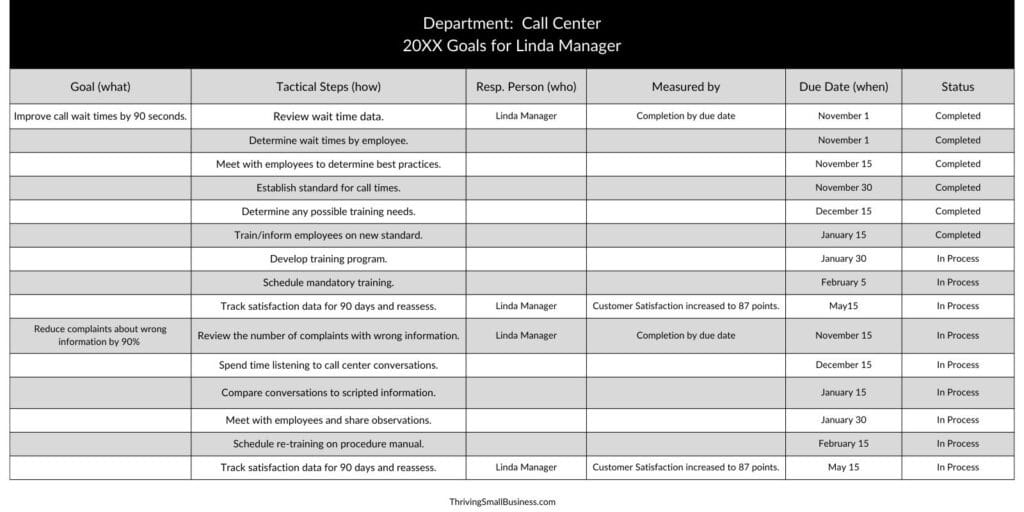Sample Employee Performance Goals
Estimated reading time: 4 minutes
We all get the premise that in order to make money, we need to create a quality product or service that someone will pay for.
Employee performance goals help organizations do just that.
A well-structured performance management process is the most effective way to accomplish organizational goals.
This management of performance should be based on goals set at the organizational level and driven down throughout the organization.
Use these sample employee performance goals to get you started.

Employee performance goals help staff see a straight line between what they do every day and how it affects the organization’s performance.
It also helps them understand how what they do makes a difference – and ultimately affects the bottom line.
SMART Goals
The first step is to make sure each of the goals are written as SMART goals.
This model of goal development uses the SMART acronym which is – Specific, Measurable, Attainable, Realistic, and Timely.
This process can test whether or not the goals can realistically be achieved.
The idea is that once a goal is written, you should go back and ask:
Is the goal specific?
How will we measure whether or not we achieved it?
Is the goal truly attainable?
Is it realistic?
Is the timing of it right?
Ok, now let’s say that the organization has a goal of improving customer satisfaction. The current satisfaction score is 82, and the organization wants to increase it by 5 points to 87.
This would mean taking steps to improve customer satisfaction, a current score of 82 to 87, by June 30, 20XX.
Example Goal: Improve Customer Satisfaction Scores by 5 points (82-87) by June 30, 20XX.
Now let’s ask the SMART questions:
- Is the goal specific? Yes, the goal is specific in that it hopes to improve by 5 points.
- Is the goal measurable? Yes, the goal is measurable because it states 82-87, which is a measure.
- Is the goal attainable? Yes, the goal is very attainable because there are six months to move the needle on the score.
- Is it realistic? Yes, the goal is realistic because customer satisfaction data identifies areas for improvement.
- Is the goal timely? Yes, now is a good time to focus on this goal as the business goes into the fall.
This is a goal that affects every department and every employee in the organization, so everyone should be involved.
Let’s look at a specific department and what steps they can take to help improve the score.
Sample Employee Performance Goal
Now, let’s say that Linda is the customer call center manager and oversees 10 customer service representatives.
Linda’s job is to get the customer service reps involved in improving the customer experience, which should be reflected in the customer satisfaction scores.
Let’s take the organizational goal of “improving customer satisfaction by 5 points” down to the department level.
Linda is aware of some of the issues the call center has from reviewing the customer satisfaction data.
The issues expressed by customers that her department has responsibility for are:
- call wait times
- rude employees
- customer service reps who give out wrong information.
In this scenario, the call center department may then have three goals:
- Improve customer call wait times by 90 seconds.
- Reduce complaints about rude employees by 90%
- Reduce complaints about wrong information by 90%
Linda will need to improve the customer experience to improve customer satisfaction scores.
These example action steps can be put into a goal document to ensure accountability for getting them done.
Example Performance Goals For A Call Center

Linda’s supervisor will use this goal document to assess Linda’s performance and include the successful completion of these goals in her annual performance appraisal.
The results of these goals should show improvement in the overall customer satisfaction scores at the organizational level as measured in the organizational business goals.
The effort of Linda’s department supports what the organization is doing, which is why part of the management of the goal was delegated to Linda.
This is one of many steps in a structured performance management process that contributes to an organization achieving organizational objectives.
Does your organization write performance goals?






